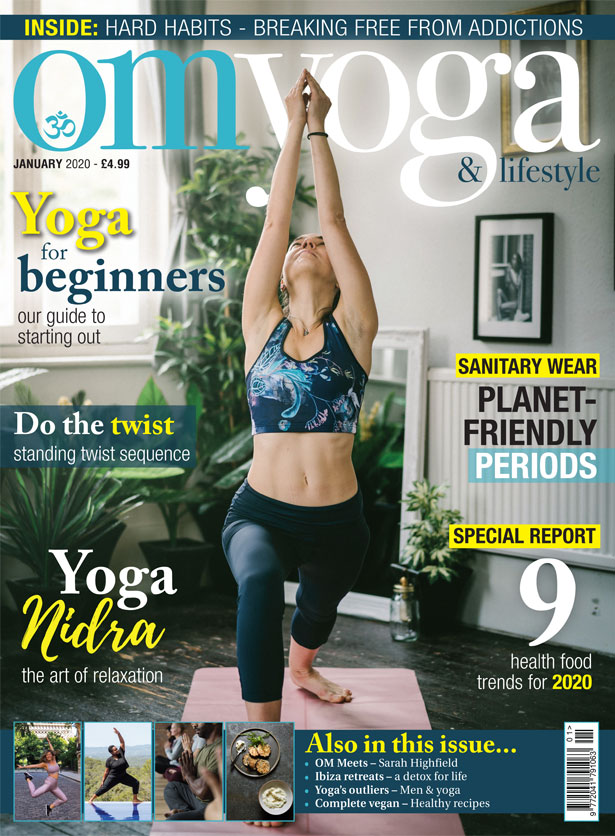
Bringing awareness to your breath
Fundamental to health, and an integral part of deepening spiritual connection, the breath is everything. It’s time to give it a little more attention, writes Jenny Baker
The very source of our existence flows ever so gracefully through our bodies to keep our hearts pumping and our brains alive. It’s unseeable, untouchable but incredibly vital. The power behind our working bodies is breath; the inhalation and exhalation of air through our lungs every minute of every day. Yet, it’s something that we hardly pay attention to.
Ask yourself this question: do I have a tendency to take short, shallow breaths? Most of us are entrenched in our busy schedules, too tense and fixed both mentally and physically to notice how our breathing is affecting us. Challenge yourself to pay attention to the kind of rhythm your breathing takes.
Here’s how yoga can bring awareness to your breath and help you focus on slower, deeper breathing for your health.
Better breathing through yoga
One of the many benefits of committing to a yoga practice, is that it gives you the opportunity to really focus on your breathing for a concise period of time during the day. If you find yourself sitting for hours on end at a computer, or if your muscles are constantly under tension, it can affect the depth of your breath. Yoga creates the perfect environment to relax and concentrate on just that.
Breath awareness
In class, yoga instructors continuously emphasise the importance of conscious breathing. It is a foundational component of any yoga practice which utilises our ability to connect to our inner energies. Allow yourself to rid your mind of any distractions and just be present. Being able to connect to your breath is one of the initial ways to make yourself reside in the present. Furthermore, this is why breath awareness in yoga serves as its own type of meditation, because it calms the body down and heightens consciousness. Deep breathing with your full body allows you to open energy channels which increases mental clarity and benefits the body’s overall emotional state.
Paths of subtle energies
Breath offers a way to tap into our body’s inner energies. Our physical body is home to over 72,000 channels, known as nadis, where energy is able to flow. Nadi is a Sanskrit word meaning ‘channel’ or ‘flow’ and refers to energy channels within the body. When these nadis are flowing freely, we remain vital and healthy. When they become weak or congested, our bodies struggle both mentally and physically. The three nadis that are most important in yoga are Ida, Pingala and Sushumna.
Ida Nadi:
This channel starts at the Muladhara chakra, or the root chakra located at the base of the spine and takes its path through the chakras until it reaches its end in the left nostril. This channel corresponds to the moon energy and creates a calming effect on the body.
Pingala Nadi:
This nadi begins at the Muladhara chakra as well, but the difference is that its course through the chakras ends in the right nostril. The Pingala nadi is known for its relation to the sun energy and its heating effect.
Sushumna Nadi:
Lastly, this nadi takes a path down the central axis of the body through the spinal cord. It serves as the predominant nadi in relation to the astral or emotional body. It takes the same course that the Kundalini energy takes relating to balance, stillness of mind and ultimately leads to enlightenment.
Take time in your yoga practice to bring awareness to these nadis. If you pause between poses, you will start to notice which nadi is dominating your breath. Pay attention to your state of mind, and you’ll find which nadi is more present. If you feel agitated and energetic, you’re activating the pingala nadi, if you feel calm and relaxed, you’re activating the ida nadi, and if you have clarity of mind, you’re activating the sushumna nadi.
Benefits of deep breathing
Deep breathing offers multiple health benefits as well. Your body will thank you for it. Here are some added benefits. • Muscle relaxation • Improved oxygen delivery • Lower blood pressure • Release of endorphins • Detoxification When you combine breath with physical movement, the entire body and mind can connect and settle into complete calmness. Understanding how to consciously breathe will contribute to a developed state of awareness, a deeper yoga practice and overall improvements to your health.
Jenny Baker is the content marketing specialist for Asheville Yoga Centre in the USA and found her passion for health and wellness early on in life. Aside from writing, she enjoys travelling the world, working on her yoga practice and being physically active.




